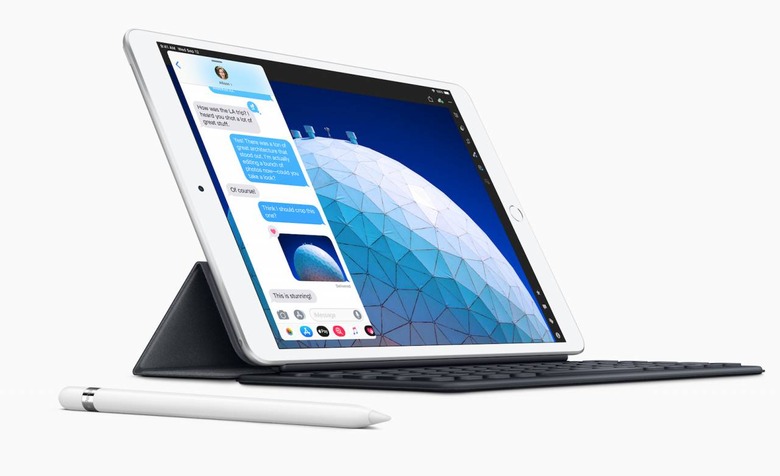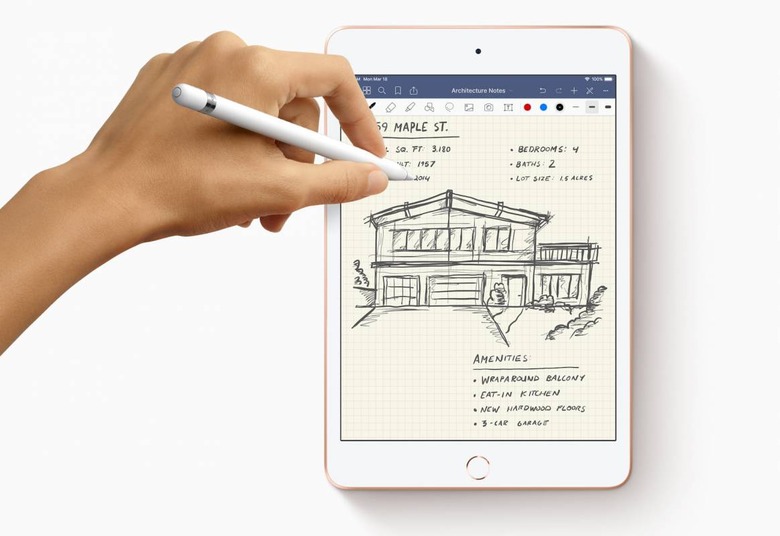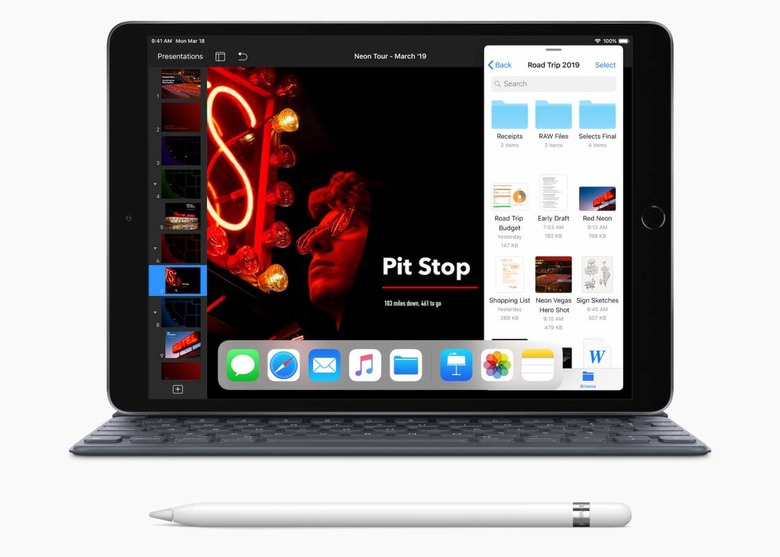Apple's iPad Range (Almost) Makes Sense Now
Apple's iPad line-up had a big gap in the middle, something the new 10.5-inch iPad Air and iPad mini 2019 address today. Promising to balance affordability and specifications, the new tablets slot right into the midrange, offering not one but two options for those turned off or priced out of Apple's existing iPads.
The new iPad Air fills a big hole in Apple's iPad range
Had you looked at Apple's iPad line-up yesterday, you'd have been forgiven for assuming that the Cupertino firm had decided there was no market for mid-range tablets. At the one extreme, the iPad offers the most affordable option, from $329. At the other, the iPad Pro started out at a hefty $799.

The new iPad Air arrives right in the middle of that range. Priced from $499 for the iPad Air WiFi, and from $629 for the iPad Air WiFi + Cellular, it's right in the sweet spot for those looking for more power than an entry-level iPad, but who don't quite need (or can't quite afford) the laptop-replacing iPad Pro at the other end of the scale.
It's not just the midpoint in price, mind, but specifications too. The 10.5-inch screen slots neatly between the entry-level iPad's 9.7-inches and the iPad Pro's 11- or 12.9-inches. A much more modern Apple A12 Bionic chip should pay dividends in performance, compared to the iPad's aging A10. And of course, the support for a Smart Keyboard – unlike the iPad's Bluetooth keyboard support alone – gives those wanting to ditch their Windows or macOS laptop another option versus a Chromebook.
The iPad mini is a wild-card
At times, it felt like Apple had given up completely on the iPad mini. In a way that strategy would have made sense, too: larger and larger iPhone models were arguably eating into the market for a small tablet. Selling a greater number of iPhone XS Max smartphones than iPad mini tablets contributes a lot more to Apple's bottom line.

Still, that price difference is huge, and there are those who really don't want – or need – everything an iPhone can do. The 2019 iPad mini (5th generation), with its 7.9-inch screen and $399 starting price, checks the box for a kid's tablet or as an ereader. There's a premium over, say, a Kindle Oasis, yes, but the functionality is far greater too.
Better still, is the sense that just because the iPad mini may be smaller, it doesn't mean you have to sacrifice specifications. There's the same A12 Bionic chip as in the new iPad Air, for instance, and the same maximum 256 GB of storage. You can have a WiFi + Cellular configuration, too, and there's now Apple Pencil support. Indeed the only real spec omission is the absence of Smart Keyboard support, though given the iPad mini's size that probably won't be something most typists will miss.
Suddenly the iPad range seems complete now
Previously, if you needed more than what the entry-level iPad offered, but not quite so much as the iPad Pro delivers, you were left in a quandary. Indeed the best option in that situation had been to find either a second-hand or Apple refurbished first-generation iPad Pro. Now, though, Apple has filled that middle zone with two strong options.

The new iPad Air, with its bigger screen, feels like a more grown-up tablet while still being affordable. The new iPad mini, meanwhile, keeps the smaller footprint that makes it so popular in certain quarters, but brings the specifications up to date. Meanwhile the iPad Pro's price no longer feels like such a stretch, as the feature walk from entry-level tablet to premium is far clearer.
The tablets make sense... but not the Apple Pencil
If there's a fly in Apple's ointment here, it's around the iPad accessories. The iPad range may be looking straightforward now, with a clean arc from affordable models at one end and the all-singing, all-dancing iPad Pro at the other, but that doesn't mean there's no room for confusion left. Chief culprit there is the Apple Pencil.
Apple launched a second-generation Apple Pencil alongside the new iPad Pro models in 2018. However it kept the original stylus on sale too, because some of the existing iPad models – including the original iPad Pro tablets and the iPad 6th generation – had compatibility with that, not the Apple Pencil 2nd generation. The expectation had been that, as new pen-enabled iPads arrived, Apple would shift to the newer Pencil, but that hasn't happened.
Instead, the 2nd gen model still only works with the iPad Pro 12.9-inch (3rd generation) and the iPad Pro 11-inch. These new iPad Air (3rd generation) and iPad mini (5th generation) rely on the original Apple Pencil. It's an odd bit of accessory confusion that could get annoying – and expensive, given the 1st gen stylus is $99 and the 2nd gen is $129 – if you're a multi-iPad household or office.
All the same, what Apple has done today in fleshing out its tablet range is notable – particularly given 2019 is going to see a big push on iPad functionality. After seeming a little neglected by iOS 12 last year, when it came to tablet-centric features, the expectation is that Apple will use iOS 13 to remedy that omission. We'll hear more about that at WWDC 2019 in early June.
